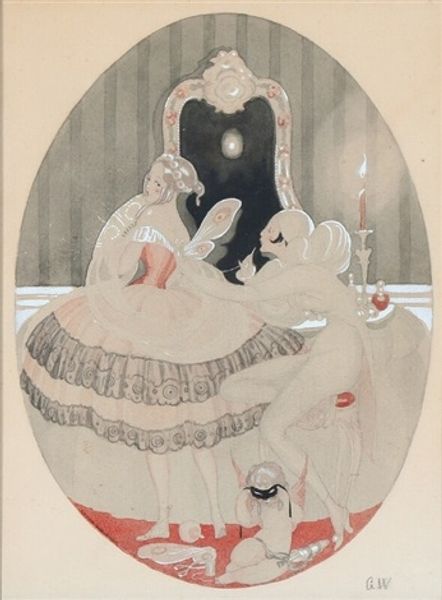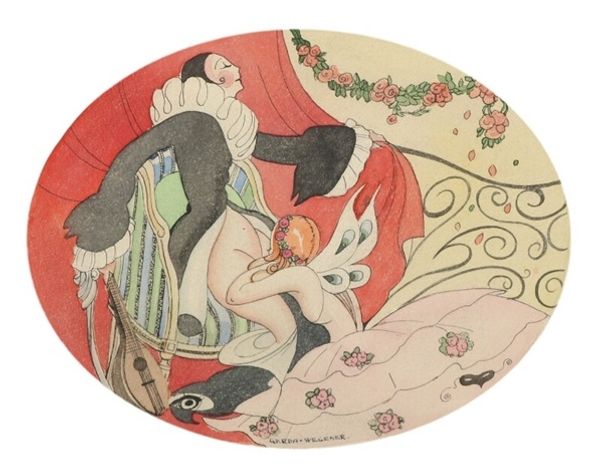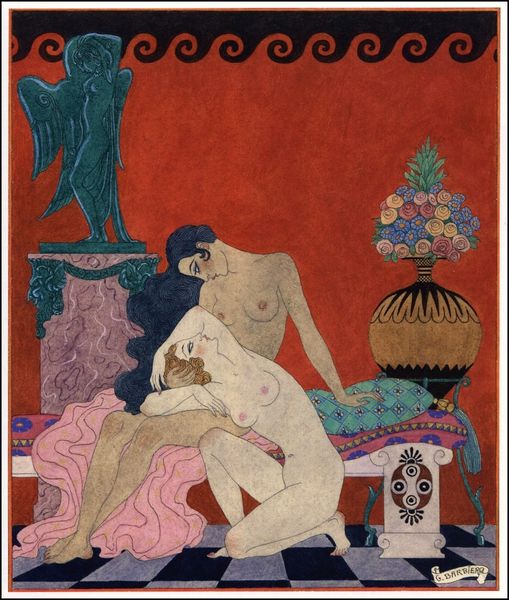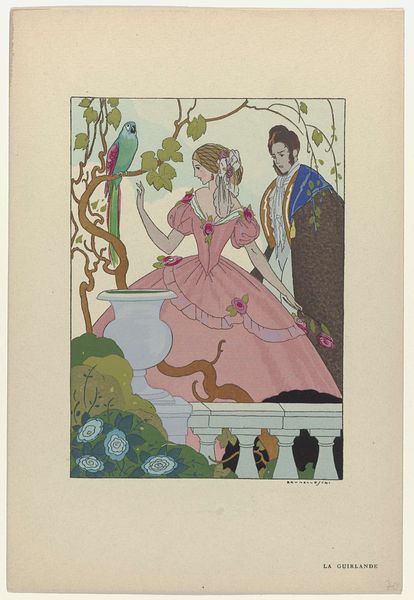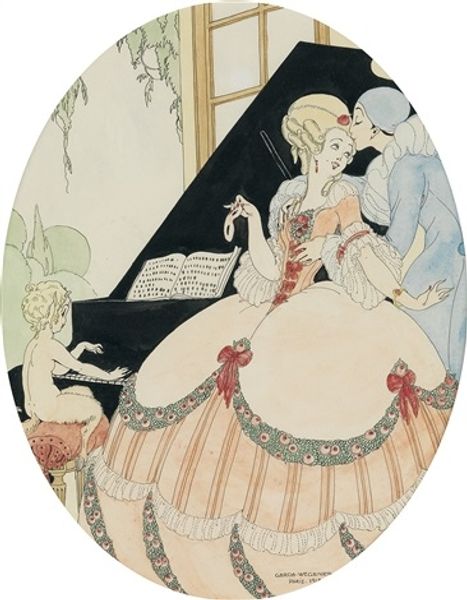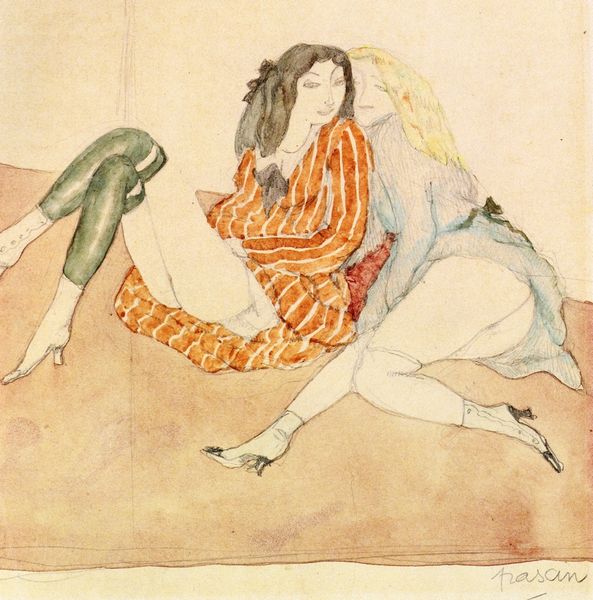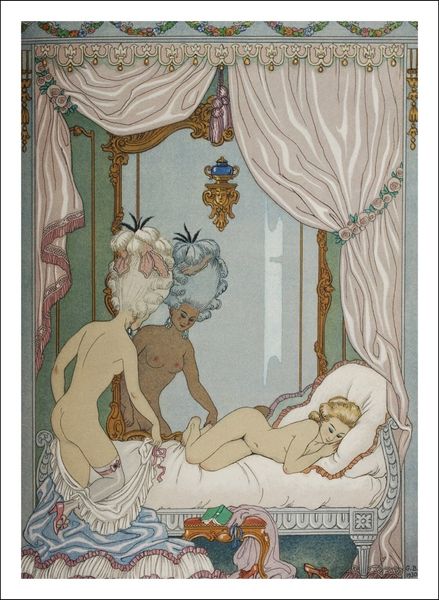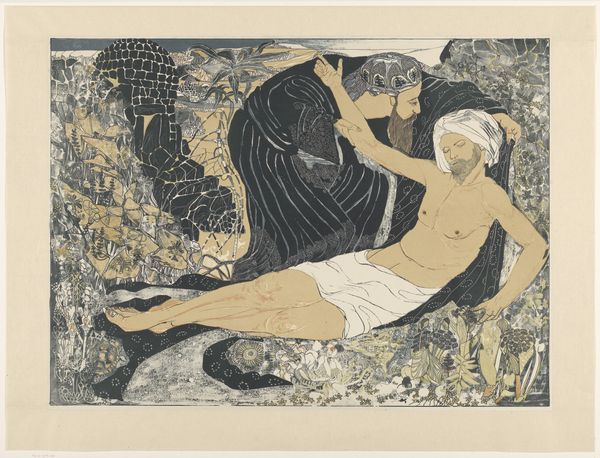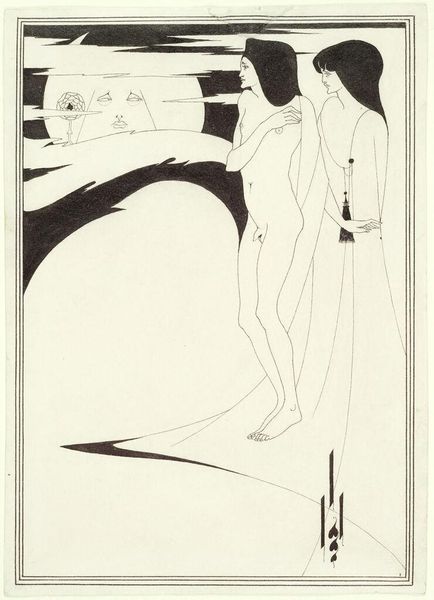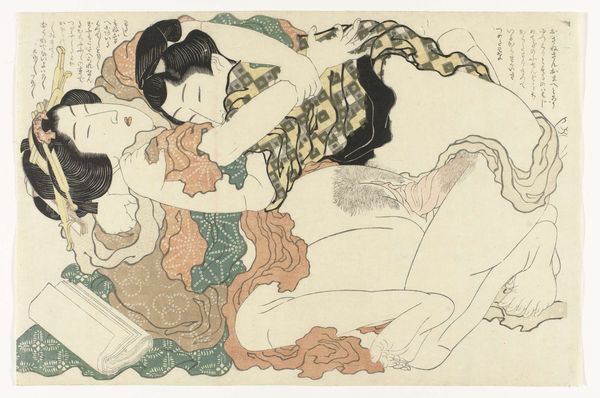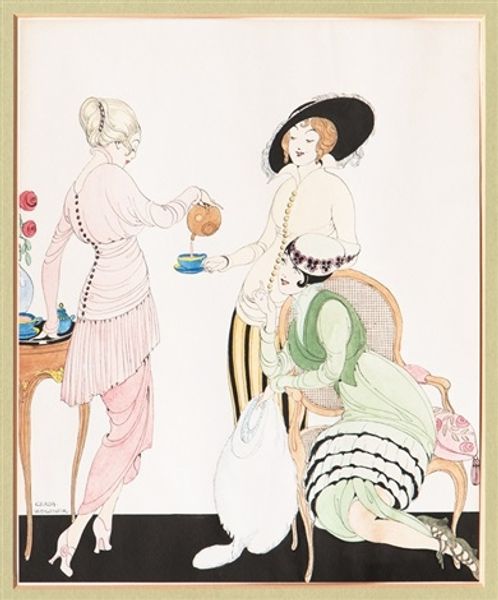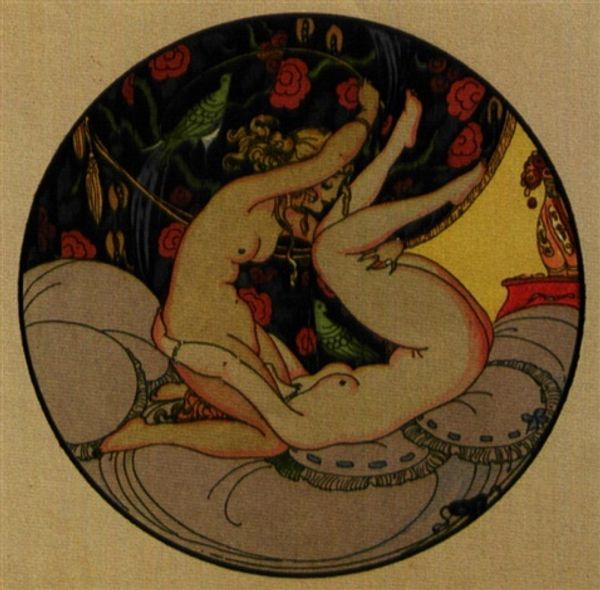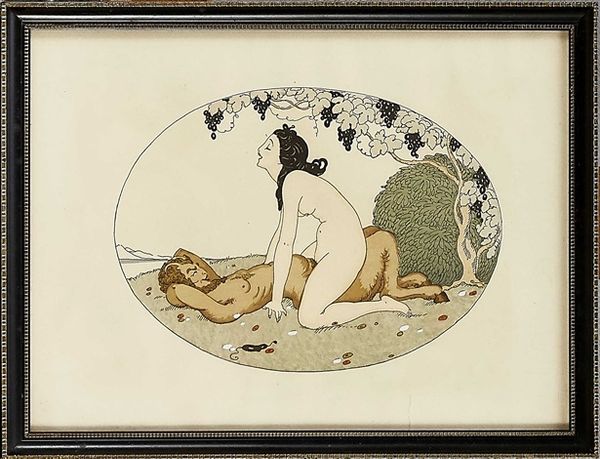
drawing, painting, watercolor
#
drawing
#
art-nouveau
#
painting
#
figuration
#
watercolor
#
genre-painting
#
nude
#
erotic-art
Copyright: Public domain
Curator: This lively piece, titled "Le Bal Masqué," comes to us from the hand of Gerda Wegener. It appears to be a watercolor and ink drawing. Editor: What a playful scene! It’s titillating, but also carries this undertone of anxiety with the surprised face and demonic character. The muted pastel palette enhances its slightly unsettling, dreamlike atmosphere. Curator: It certainly seems to capture the decadence and social dynamics of its era, perhaps even commenting on it. Gerda Wegener was known for her Art Nouveau style, but also for her exploration of gender and identity. She achieved visibility within the public Parisian Salons. Given her unique position as a queer woman working and showing in this world, how might that inform our understanding? Editor: The masked ball itself is loaded with symbolic potential. Masks offer a freedom from societal constraint, allowing a glimpse beneath the surface. The butterfly wings on one woman represent transformation, a release from the earth-bound caterpillar, maybe an embrace of something more transgressive. The devil costume is fairly self explanatory. What do you think she is communicating in revealing this kind of dynamic among women? Curator: Given the art historical and socio-political contexts of the time, perhaps a challenge to restrictive norms around female sexuality and agency. The provocative display could be interpreted as both a celebration and critique of these gatherings, these moments where societal boundaries blurred, particularly within the circles Wegener navigated. She’s capturing this exciting atmosphere and maybe the tensions embedded within it. The nude woman performing a burlesque gesture feels intentional in the messaging. Editor: Exactly! These balls allowed women to occupy and subvert traditional spaces, momentarily dismantling conventional hierarchies. The performance implies defiance against what it meant to be a woman during that era. Curator: These spaces gave Wegener a freedom and safety, too, and as her visibility rose, so did that freedom to push beyond conventional art. Seeing that shift, even just within the last few years of the 1910's into the 1920's feels very clear within Wegener's drawings and paintings. Editor: It leaves us to ponder what really happens behind the masks. Is it liberation or just another performance? Curator: I agree, there’s a deliberate ambiguity. "Le Bal Masqué" serves as a poignant reminder of the shifting social tides during that time, capturing the essence of art and its potential for both escapism and cultural change. Editor: A great artwork is always that which makes us think deeply and invites so many different possible interpretations!
Comments
No comments
Be the first to comment and join the conversation on the ultimate creative platform.
